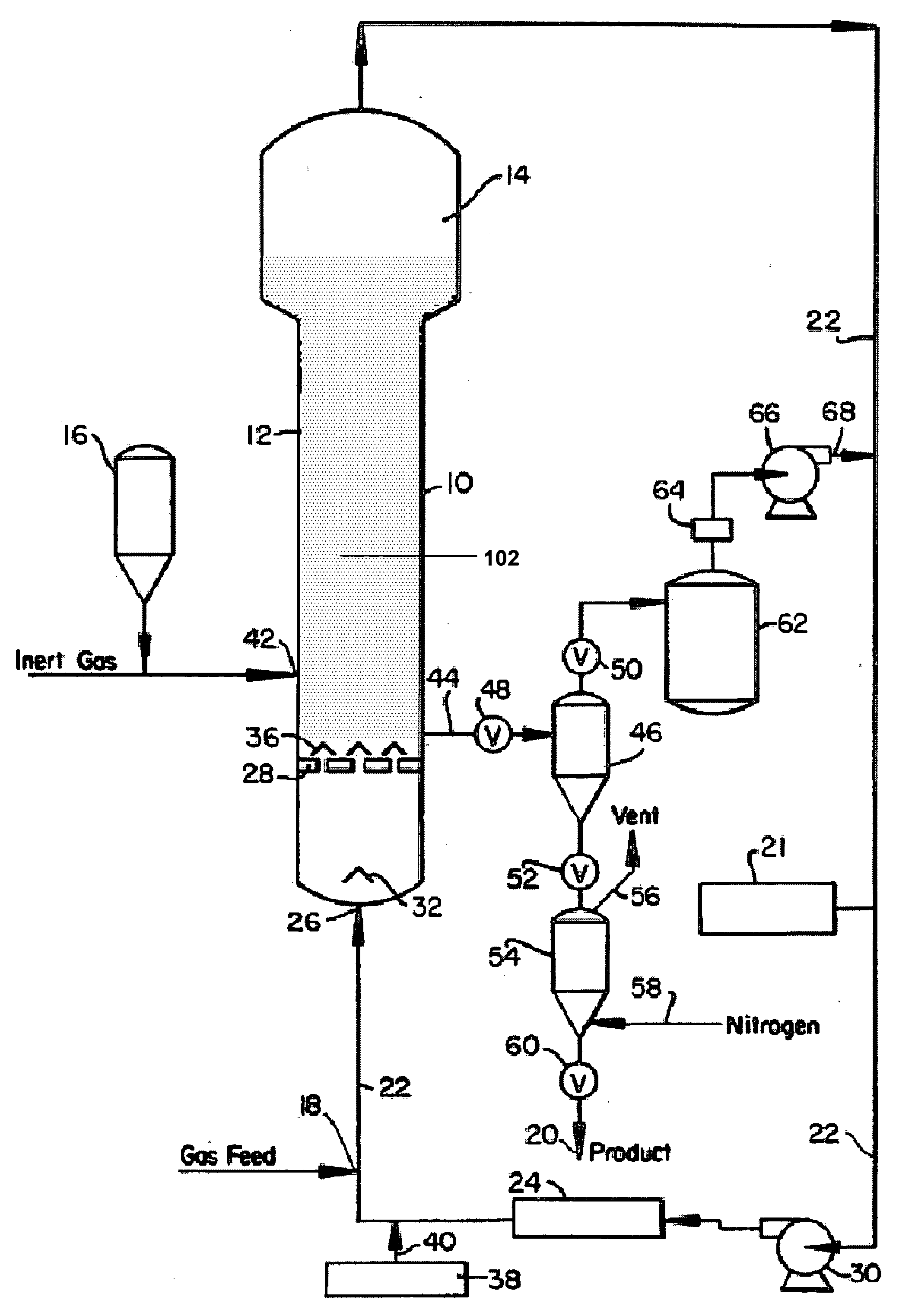Condensing mode operation of gas-phase polymerization reactor
a gas-phase polymerization and condensing mode technology, which is applied in the field of gas-phase polymerization reactor condensing mode operation, can solve the problems of complete reactor shut-down, limited fluid velocity in the reactor, and increasing the reaction rate in the fluidized bed reactor
- Summary
- Abstract
- Description
- Claims
- Application Information
AI Technical Summary
Benefits of technology
Problems solved by technology
Method used
Image
Examples
examples
[0077] All the following examples are related to commercial scale operations conducted in a gas phase fluidized bed polymerization reactor similar to the one as shown and described above in FIG. 1. The reactor used for these examples have a diameter of 14.5 feet (4.42 m). Detailed operating conditions and operation results of these examples are listed in Table 2.
[0078] Examples 1, 4 and 6 are comparative examples using iso-pentane as ICA, running at conditions very close to their stickiness limits. Therefore, the production rates are the maximum ones can be achieved under those conditions.
[0079] Examples 2, 3, 5 and 7 employ low-solubility ICAs. It can be seen from Table 2 that significant increase of production rate is achieved, although they are not necessarily operated near the stickiness limits.
TABLE 2Example1234567ProductLLDPELLDPELLDPELLDPELLDPEHDPEHDPEComonomer1-butene1-butene1-butene1-hexexe1-hexexe1-hexexe1-hexexeCatalystZiegler-Ziegler-Ziegler-MetalloceneMetalloceneZie...
example # 1
*relative to Example #1
**relative to Example #4
***relative to Example #6
****determined using ASTM D1238
[0080] In one preferred embodiment, n-butane is used as an ICA to produce metallocene catalyzed linear low density polyethylene in a reactor at 350 psig and 85° C., as more fully set forth in Example 5 above. In another preferred embodiment, iso-butane is used as an ICA to produce Ziegler-Natta catalyzed linear low density polyethylene in a reactor at 350 psig and 91° C., as more fully set forth in Example 3 above.
[0081] Although illustrative embodiments have been shown and described, a wide range of modification, changes and substitution is contemplated in the foregoing disclosure. In some instances, some aspects of the illustrative embodiments may be employed without a corresponding use of the other aspects. Accordingly, it is appropriate that the appended claims be construed broadly and in a manner consistent with the scope of the invention.
[0082] Unless otherwise indicated...
PUM
| Property | Measurement | Unit |
|---|---|---|
| Temperature | aaaaa | aaaaa |
| Temperature | aaaaa | aaaaa |
| Weight | aaaaa | aaaaa |
Abstract
Description
Claims
Application Information
 Login to View More
Login to View More - R&D
- Intellectual Property
- Life Sciences
- Materials
- Tech Scout
- Unparalleled Data Quality
- Higher Quality Content
- 60% Fewer Hallucinations
Browse by: Latest US Patents, China's latest patents, Technical Efficacy Thesaurus, Application Domain, Technology Topic, Popular Technical Reports.
© 2025 PatSnap. All rights reserved.Legal|Privacy policy|Modern Slavery Act Transparency Statement|Sitemap|About US| Contact US: help@patsnap.com


